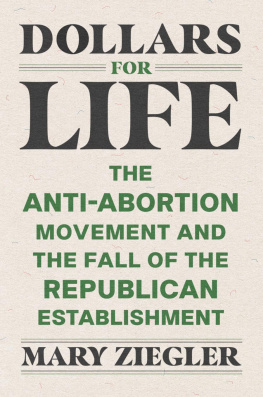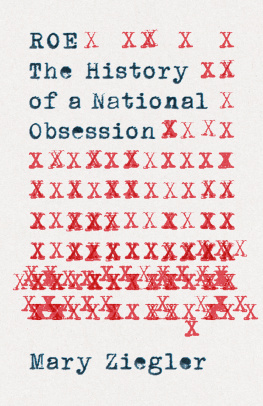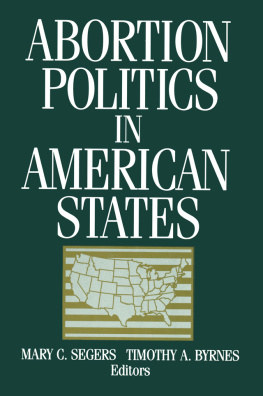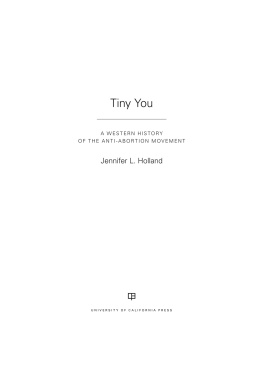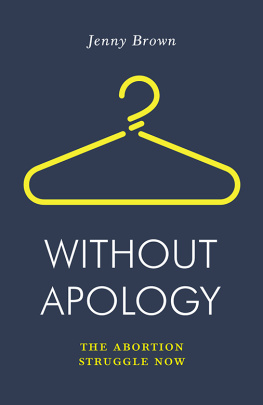Mary Ziegler - Dollars for Life: The Anti-Abortion Movement and the Fall of the Republican Establishment
Here you can read online Mary Ziegler - Dollars for Life: The Anti-Abortion Movement and the Fall of the Republican Establishment full text of the book (entire story) in english for free. Download pdf and epub, get meaning, cover and reviews about this ebook. year: 2022, publisher: Yale University Press, genre: Politics. Description of the work, (preface) as well as reviews are available. Best literature library LitArk.com created for fans of good reading and offers a wide selection of genres:
Romance novel
Science fiction
Adventure
Detective
Science
History
Home and family
Prose
Art
Politics
Computer
Non-fiction
Religion
Business
Children
Humor
Choose a favorite category and find really read worthwhile books. Enjoy immersion in the world of imagination, feel the emotions of the characters or learn something new for yourself, make an fascinating discovery.
- Book:Dollars for Life: The Anti-Abortion Movement and the Fall of the Republican Establishment
- Author:
- Publisher:Yale University Press
- Genre:
- Year:2022
- Rating:3 / 5
- Favourites:Add to favourites
- Your mark:
- 60
- 1
- 2
- 3
- 4
- 5
Dollars for Life: The Anti-Abortion Movement and the Fall of the Republican Establishment: summary, description and annotation
We offer to read an annotation, description, summary or preface (depends on what the author of the book "Dollars for Life: The Anti-Abortion Movement and the Fall of the Republican Establishment" wrote himself). If you haven't found the necessary information about the book — write in the comments, we will try to find it.
Mary Ziegler: author's other books
Who wrote Dollars for Life: The Anti-Abortion Movement and the Fall of the Republican Establishment? Find out the surname, the name of the author of the book and a list of all author's works by series.
Dollars for Life: The Anti-Abortion Movement and the Fall of the Republican Establishment — read online for free the complete book (whole text) full work
Below is the text of the book, divided by pages. System saving the place of the last page read, allows you to conveniently read the book "Dollars for Life: The Anti-Abortion Movement and the Fall of the Republican Establishment" online for free, without having to search again every time where you left off. Put a bookmark, and you can go to the page where you finished reading at any time.
Font size:
Interval:
Bookmark:
DOLLARS FOR LIFE

Published with assistance from the foundation established in memory of William McKean Brown.
Copyright 2022 by Mary Ziegler.
All rights reserved.
This book may not be reproduced, in whole or in part, including illustrations, in any form (beyond that copying permitted by Sections 107 and 108 of the U.S. Copyright Law and except by reviewers for the public press), without written permission from the publishers.
Yale University Press books may be purchased in quantity for educational, business, or promotional use. For information, please e-mail sales.press@yale.edu (U.S. office) or sales@yaleup.co.uk (U.K. office).
Set in Scala & Sans Scala type by IDS Infotech, Ltd., Chandigarh, India.
Printed in the United States of America.
Library of Congress Control Number: 2021951004
ISBN 978-0-300-26014-4 (hardcover : alk. paper)
A catalogue record for this book is available from the British Library.
This paper meets the requirements of ANSI/NISO Z39.48-1992 (Permanence of Paper).
10 9 8 7 6 5 4 3 2 1
To Sylvia, who taught me the magic of books
CONTENTS
PREFACE
IN JANUARY 2021, THE DEMISE OF Roe v. Wade seemed imminent, but few were paying attention. This should not have been a surprise. That month, the United States had its highest number of deaths in the COVID-19 pandemic to date and one of the highest per capita COVID death rates in the world. After being voted out of office in November, Donald Trump mounted an unprecedented and ongoing campaign to overturn the 2020 presidential election. Alleging a massive conspiracy, Trump brought dozens of lawsuits, pressured state legislators and other officials, and urged Congress and the vice president to refuse to certify the election results. This campaign culminated in an invasion of the U.S. Capitol that killed five people. For a time, even anti-abortion leaders seemed focused on other things. James Bopp Jr., one of the movements most prominent lawyers, filed and later withdrew lawsuits challenging the election results in four key states. Two months after Election Day, Janet Folger Porter, a firebrand known for pushing early bans on abortion, promised supporters that God would find a way for Trump to win. Democracy in the United States was in crisis, and the countrys caustic abortion politics seemed to have faded into the background.
Yet the American anti-abortion movement contributed far more to the rise of Donald Trump and the transformation of the GOP than we often think. Scholars have traced how an ascendant form of Christian nationalismthe belief that the United States was and always should be a Christian nationwas
Political scientists and historians of the religious right have told part of the story of the fascinating partnership between abortion foes and Republican leaders. Their studies often suggest that while pro-lifers became dependent on the GOP, the Republican Party did not fundamentally change its priorities. Some assert that the GOP co-opted the religious right, gaining its votes while offering little but speeches in return.
By focusing on the pro-life movement and its complex relationship with the broader religious right, this book shows that partnership with the movement had consequences for the GOP that went well beyond abortion. Anti-abortion operatives helped make control of the Supreme Court a deciding issue for conservative voters who had no legal background. And to gain control of the Supreme Court, abortion foes joined and ultimately helped to lead a growing fight against campaign finance laws, persuading many social conservatives and GOP leaders to oppose them as well.
These shifts to a focus on judicial nominations and money in politics helped the GOP score electoral victories it might not otherwise have managed. But in the long term, the changes in campaign finance rules that the anti-abortion movement helped to achieve came at a terrible price for the Republican establishmentand had important consequences for the functioning of American democracy.
Of course, other factors helped to gut the establishment as well. To begin with, the GOP had long courted the kind of voters whose loyalty Trump later captured. For decades, Republicans had fueled whites anxieties about immigration and demographic change. Christian nationalismand some evangelical Protestants investment in a masculine populismdid not begin with Trump. In the past, however, Republican politicians had effectively managed these forces. GOP voters had fallen in love with populists before, but the establishment had found a way to sideline them.
Gradually, however, the Republican establishment grew less able to marginalize insurgents. Americans increasingly disliked those in the opposing political party, and this negative partisanship triggered a surge in partisan loyalty. Whomever their own party nominated, polarized voters did not cross
The destruction of the GOP establishment had as much to do with the rise of conservative media as with negative partisanship. Before the rise of outlets like Newsmax and the Fox News Channel, establishment Republicans enjoyed superior access to the press. But conservative media gave insurgents a platform and encouraged voters to reject the establishment for its willingness to compromise.
If the rise of conservative media helps to explain the transformation of the GOP, changes to the rules of campaign spending also gutted the Republican establishment. Because the Republican Party tended to benefit disproportionately from a surge in outside spendingand attracted most of the top-dollar donors behind itchanges to campaign finance rules often had a greater influence on the balance of power within the GOP. In the past, when charismatic populists like Pat Buchanan ran for the GOP presidential nomination, the Republican establishment used its campaign spending advantage to crush them. But after the rules of campaign finance were changed by Citizens United v. Federal Election Commission (2010) and SpeechNow.org v. Federal Election Commission (2010), nonparty outside spendingmoney independent of candidates, campaigns, and partiessoared. Republican insiders ran some of the nominally outside spending groups, but the party itself did not control them, and many had agendas quite different from those of the conventional GOP leadership. Issue-based
How did the abortion debate come to revolutionize the broader struggle over money in politics? The story has many characters, but James Bopp Jr. stands out. A proud Hoosier, Bopp was a passionate conservative before he ever worked a day on abortion politics. He was a state prosecutor in Indiana when Congress passed crucial amendments to the Federal Election Campaign Act in 1974, a major overhaul of campaign finance inspired by President Nixons Watergate scandal. By the late 1970s, Bopp had become the general counsel for the National Right to Life Committee (NRLC), the largest national anti-abortion group. At first, he and other anti-abortion lawyers viewed campaign finance laws as no more than a nuisance, but by the mid-1980s, they saw these laws as a lasting headache and began arguing that campaign finance limits were unconstitutional.
This shift came because the anti-abortion movement had embraced a new mission: control of the Supreme Court. In the 1970s and early 1980s, conservative attorneys in groups like the Federalist Society mobilized to influence the courts, forming professional networks that would find promising judicial nominees, influence legal norms, and legitimize conservative legal arguments. At first, pro-lifers mostly stayed out of this work. Instead, for a decade after Roe v. Wade
Next pageFont size:
Interval:
Bookmark:
Similar books «Dollars for Life: The Anti-Abortion Movement and the Fall of the Republican Establishment»
Look at similar books to Dollars for Life: The Anti-Abortion Movement and the Fall of the Republican Establishment. We have selected literature similar in name and meaning in the hope of providing readers with more options to find new, interesting, not yet read works.
Discussion, reviews of the book Dollars for Life: The Anti-Abortion Movement and the Fall of the Republican Establishment and just readers' own opinions. Leave your comments, write what you think about the work, its meaning or the main characters. Specify what exactly you liked and what you didn't like, and why you think so.

